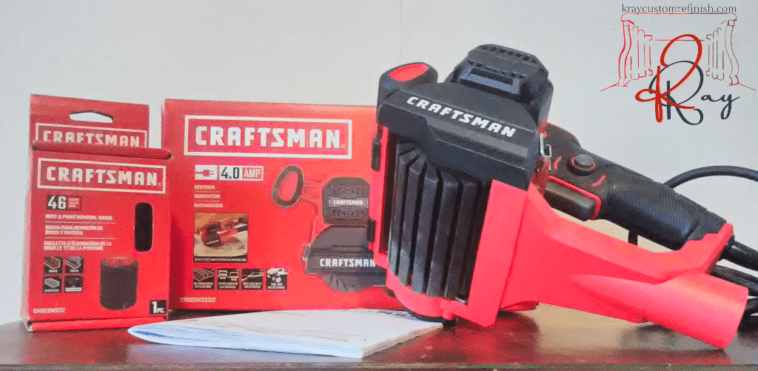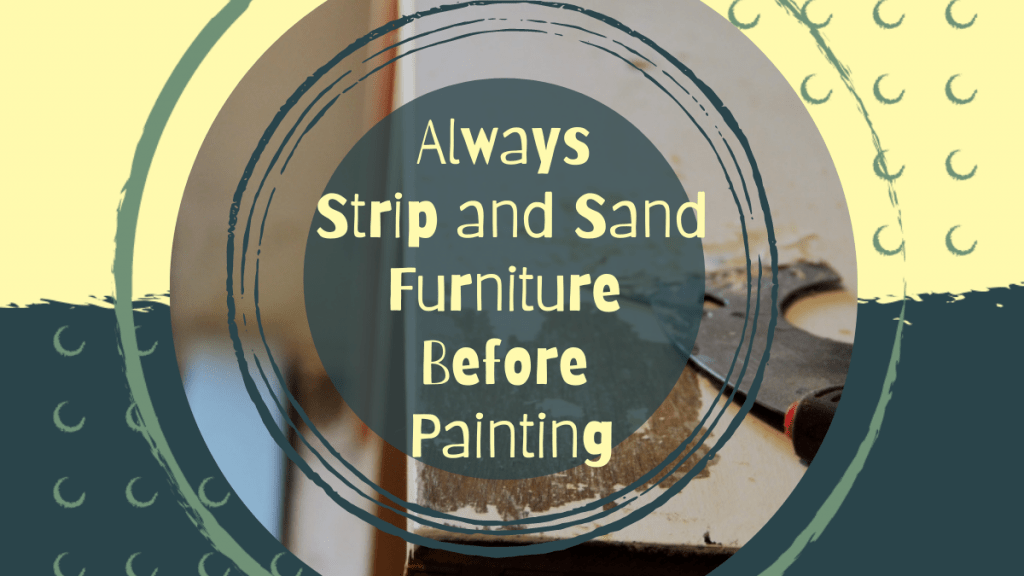
DISCLAIMER: I was not compensated for writing this post. I have no professional affiliation with Restorer Tools, I just really think this is the best sander for stripping furniture. Any other affiliate links below did not, in any way, change the opinion expressed in this post. But, again, I may receive a small commission if you purchase a restorer through any of the links below at zero added cost to you! Thanks!
Hi all! I hope everyone is happy and healthy during these lovely times. I apologize to anyone that tried to visit my site in February. I switched to a new host and had a few technical difficulties for most of the month. But I’m all situated now with a site running faster than ever thanks to A2 Hosting. Now, onto furniture!
We’re back on the topic of stripping furniture!
It seems like I’ve discussed this a few times already, but it really is one of the suckiest parts of furniture refinishing. Don’t you agree?
If you’ve read my post on Which Paint Stripping Method Sucks the Least, you know that I tested out orbital sanders, heat guns, and one of my top choices (but not number 1), this Paint Stripping Drill Attachment:

It worked great, but the shape of it just didn’t work great on flat surfaces like dressers or cabinets.
In the end, I decided the best method was a chemical paint stripper method, which I wasn’t happy with for a lot of reasons.
What’s the first thing you should do before refinishing a piece of wood furniture?
Figure out the wood type.
Different woods require different methods for sanding, staining, painting, repairing, you name it.
After hours on Google comparing photos of hundreds of wood grains to your piece, are you more unsure than ever? Get the 169 page interactive eBook, “Grain”.
I haven’t stopped searching for better options for stripping furniture since my first experiment.
Until now, I haven’t had much luck. I resorted to using a belt sander on my last few pieces, which, let me just tell you again: sucks. Straight sanding a painted furniture piece is a nightmare.
Especially if it’s an older piece, with multiple layers of paint and stain. No matter what the sandpaper package says, the paint will stick to it rendering it useless after just a few strokes.
Yes, there are ways to remove the paint gunk build-up, like this Cleaning Stick I recently learned about, but it still isn’t enough for me to enjoy sanding paint.
So as you could’ve guessed, the sander was not high up on my list of Best Paint Stripping Methods.
And finally! I do believe there is an official “Best Sander for Stripping Furniture.”
And even better, it’s way more than just a regular old sander.
This Tool is a Portable Drum Sander, Stripper, and Polisher in one.
It not only strips furniture paint and rust, but it’s also great for sanding abnormal wood surfaces, texturizing wood, and even polishing wood or metal.
The name of this impossible tool? The Restorer.
I’d say it’s the perfect choice for a name, right? If you haven’t heard of it yet, you can find it in most local hardware stores. Craftsman and Porter Cable both have the restorer tool available, or you can purchase the original Restorer Tool through my Amazon link here.
At Restorertools.com you can truly see all of the different applications for this tool. From stripping a wooden deck to automobile rust removal to polishing metal jewelry and even glass! But for restoring furniture, you’re almost 100% covered with this thing.
First, let’s go over the Restorer Tool’s features and handling.

Size-wise the tool is slightly smaller than the average belt sander and certainly lighter at only 4.5lbs.
I have trouble using the belt sander on most jobs due to the weight and size, so that’s a bonus for sure.
The setup is nice with a gripped trigger handle for one hand and a soft-grip handle on top for the opposite hand. This makes the tool easy to control whether you’re working on a flat surface below, a curved surface above, or even vertical surfaces in front of you.
On the side of the trigger handle, there is a lock-on button to help with hand fatigue and keep the roller power steady. As long as you keep the restorer moving forward and backward along the grain of the wood, you shouldn’t have to worry about gouging the surface of your piece.
You don’t want to put much pressure on the tool as you move it along the surface.
Just like most other sanders, the weight of the tool is enough for it to do its job correctly. Pressing down on the tool while it’s on will most likely slow the motor speed down, cause more friction and heat, and may even damage the motor if you continuously use it incorrectly.
The variable speed is actually variable with 6 different speeds!
The speed knob can be set on 1, for the slowest speed at 1000 RPM, all the way up to MAX, the fastest speed at 3200 RPM. There isn’t a huge jump between RPMs with 6 different settings, but just enough to find the perfect sweet spot for each surface.
While removing heavier finishes, or sanding rougher surfaces, you’ll want to stay in the lower range of speeds to keep the heat from rising too high. Too much heat can cause sandpaper clogs and possibly, damage to your work surface.
For sanding surfaces that are smoother with little to no finish, you can use the higher speed settings.

The Restorer tool has a dust port on the back for easily attaching a vacuum hose for dust removal.
This feature is nice, but I would’ve been happier if it had a bag or dust canister like my new Bosch Orbital Sander. You don’t have to attach the tool to a vacuum, it will still operate without a hose attached.
The only reason I have trouble using the vacuum attached to the tool is the noise. Being a stay-at-home mother I usually have to do all of my work out in the garage at night time. A little noise is OK, but having the two things running at once is a bit much for me and my neighbors!
I was worried that the dust would shoot out the back of the restorer while it was running, and leave me in a dust cloud the first time I tried it. Luckily, this did not happen.
As you can see at the end of the video below, without suction from a hose on that end of the tool, the dust pretty much just settled behind the roller and fell into a pile on the surface I was sanding. It surprisingly doesn’t blow around a lot, but you do need to stop and clean off your surface pretty regularly.
Testing Out The Restorer Tool: 60 Grit Sanding Sleeve
This was legit my first time trying out the tool, as you can see by the video, it took a bit of getting used to but it really wasn’t hard. I was amazed at how quickly the sanding wheel removed the paint.
I thought that the Paint and Rust Removal Roller Wheel was going to be the best attachment for stripping furniture. But I’m honestly not sure anymore after trying them both!
The 60 Grit Sanding Roller Sleeves ate through the paint like nothing. When I tried the Paint and Rust Removal Roller Wheel with the same pressure, it did next to nothing on the same cabinet door.
Testing Out the Restorer Tool: Paint and Rust Removal Wheel
The paint and rust removal wheel isn’t just a sleeve. You have to switch out the roller completely, so the roller wheel is a lot harder than the roller wheel used for the sanding sleeves. I think you just need to put a bit more pressure on it for the same result. I had Scott give it a try, and he had much better results.
Testing Out the Restorer Tool: Paint and Rust Removal Wheel Take 2
So it seems you just need a bit more pressure for the Paint and Rust Removal Wheel, at least on wood surfaces. For something like metal furniture rust removal, I think this would be the perfect option.
Related: Refinishing Metal Furniture – Things to Know Before You Start
As for stripping furniture, I think I’ll stick with the Restorer’s sandpaper sleeves.
They’re available in all of the normal grits: 120, 220, 80, 60. Stripping furniture definitely requires a lower grit, but with the variable speeds on the Restorer, I may be trying it out for finish sanding as well.
If you need help with sanding, staining, or painting wood furniture, be sure to check out my many posts on Furniture Restoration.

So there we have it! The best sander for stripping furniture: The Restorer Tool. Hands down. What do you think? Have you tried out the Restorer tool? Leave a comment and let me know what you think!
And don’t forget to sign up for my mailing list to receive updates on future blog posts!





I came here to see if I could clean wood with mineral spirits before applying a water-based poly and found this article by accident!
Yesterday while sanding down a project my wrist started failing, and I somehow fumbled upon the Restorer tool on Amazon, and I wanted to inform you.
Seeing here that you’ve already endorsed it I’ll be purchasing one as soon as I’m able.
As a mechanic that’s trying to broaden his range, I greatly appreciate what you’re doing and how you’re doing it. Thank you
Thank you so much for your kind words, Chris. Always happy to hear that my time and effort helps someone even a tiny bit! 🙂 The Restorer will DEFINITELY cut your sanding time/wrist pain down significantly. I’d love to hear how it works out for you! Thanks again 🙂